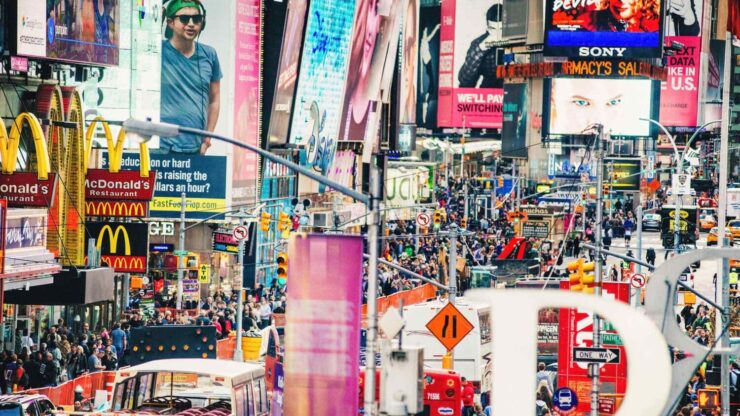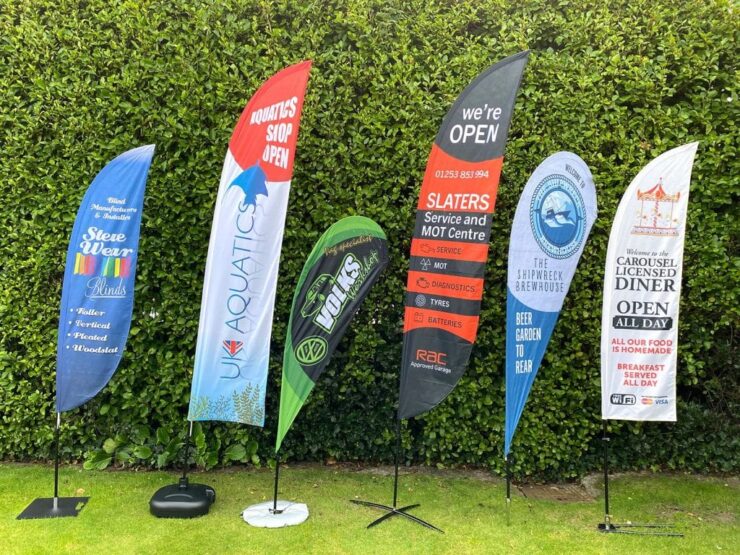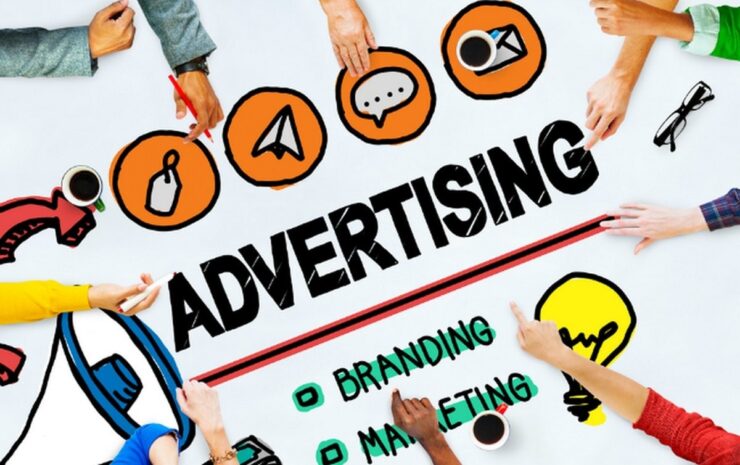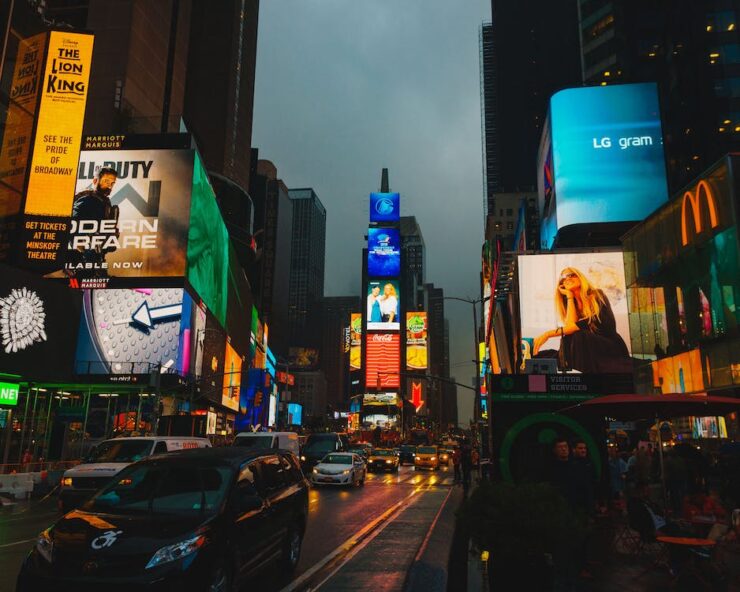Advertising is an art and a science that has permeated every facet of our lives. From large billboards that loom over highways to digital pop-ups that appear on our screens, advertising techniques have evolved, but their goal remains consistent: influencing consumer choices.
Delving deep into the realm of advertising reveals its transformative power and highlights the ingenious methods that businesses employ to resonate with their audience.
The Evolution of Advertising: A Timeline of Transformation

Throughout history, advertising has been a dynamic force, evolving and adapting in response to societal shifts, technological advances, and changing consumer behaviors.
From humble hand-painted signs in ancient marketplaces to the sophisticated, algorithm-driven digital campaigns of today, the journey of advertising provides a fascinating lens through which to view the progression of commerce and culture.
Traditional Advertising and Its Indelible Impact
Before the digital tsunami transformed the advertising landscape, traditional mediums held sway.
These forms of advertising, tangible and direct, had a unique charm and effectiveness.
They were omnipresent – from pages of newspapers and magazines to the familiar voices on radio broadcasts and vivid visuals on television screens.
Benefits of Feather Flags in Advertising

- Visibility: The swaying motion and vibrant designs of feather flags ensure they grab attention even in bustling settings. Their prominence makes them an indispensable tool, especially for local businesses trying to make a mark in crowded events or street corners.
- Cost-Effective: In the realm of outdoor advertising, where billboards and electronic displays can cost a fortune, feather flags emerge as a budget-friendly alternative that doesn’t compromise on visibility.
- Flexibility: Their portable nature means businesses aren’t tethered to one location. Whether it’s a weekend market, a sporting event, or outside a store, feather flags can be easily transported and set up, offering unparalleled flexibility.
- Durability: Crafted to withstand the elements, high-quality feather flags are resistant to sun-fading, rain, and strong winds, ensuring they remain vibrant and intact for extended periods.
- The Magic of Jingles: Sign Outpost reminds us that before the age of skip buttons and ad-blockers, jingles were the earworms that effortlessly seeped into daily life. Their catchy melodies and memorable lyrics not only boosted brand recall but also became cultural markers of their times. Decades later, many of these jingles are nostalgically hummed, underscoring their lasting impact.
The Digital Revolution and Its Boundless Potential
The rise of the internet marked a tectonic shift in the advertising arena. The digital realm offered advertisers a vast, uncharted territory, brimming with opportunities and challenges.
With the capability to reach audiences across the globe instantaneously and tailor messages based on precise data, digital advertising heralded a new era of personalized and efficient marketing.
Social Media Influencers
These are the celebrities of the digital age. With their massive online followings, influencers have the power to shape opinions, trends, and purchasing decisions. Brands collaborating with influencers can tap into pre-established trust and reach, often resulting in highly effective campaigns.
Interactive Advertisements
The digital platform turned advertising into a two-way street. Instead of just broadcasting messages, brands could now engage with their audience.
Interactive ads, be it through clickable content, polls, or immersive experiences, not only hold users’ attention longer but also provide valuable feedback and data for advertisers.
This dynamic nature of digital ads fosters a deeper connection between brands and consumers, paving the way for more personalized and impactful campaigns in the future.
Advertising’s Multifaceted Influence on Society

The power of advertising transcends the confines of commerce. While its primary aim might be to promote products or services, its tentacles reach deep into the societal fabric, molding and reflecting collective aspirations, values, and behaviors.
By understanding the profound impact advertising has on society, we can better appreciate its role as both a catalyst for change and a mirror of the times.
Setting Consumer Trends
Advertising is a powerful trendsetter, determining not just what we buy but how we perceive value and desirability. It crafts narratives around products, infusing them with meaning, status, or emotional appeal, often turning everyday items into must-have commodities.
Desire Creation
Every iconic product begins as a mere idea, but it’s the magic of advertising that turns it into an object of desire.
By weaving stories, evoking emotions, and presenting products in aspirational settings, advertising has the unique ability to generate demand, often making us yearn for things we hadn’t previously considered.
Example: The smartphone wasn’t just sold as a device; it was marketed as an extension of one’s personality, a gateway to endless possibilities, and an emblem of modernity.
Brand Loyalty
While a good product can attract customers, it’s often the brand’s narrative, upheld through consistent advertising, that keeps them coming back.
By building emotional connections, sharing values, and consistently meeting promises, advertising can cement brand loyalty, turning casual buyers into staunch advocates.
Example: Athletic brands don’t just sell shoes; they sell aspirations of fitness, determination, and achievement. Their ads resonate with those who share these values, creating a loyal customer base.
Reflecting and Shaping Cultural Norms

Advertisements don’t exist in a vacuum. They draw from and contribute to the cultural zeitgeist. By picking up on societal sentiments, they can either reinforce prevailing views or challenge them, catalyzing change in the process.
Promotion of Diversity
With societies becoming more global and interconnected, there’s been a conscious move towards showcasing diversity in advertisements. This not only reflects the heterogeneous makeup of modern societies but also celebrates the richness it brings.
Example: Many beauty brands, which once showcased a narrow standard of beauty, now pride themselves on featuring models of different ethnicities, sizes, and ages, championing the message that beauty is universal and diverse.
Challenging Stereotypes
Advertising has the platform and reach to question and redefine societal norms. Over the years, several campaigns have taken the bold step of challenging stereotypes, prompting viewers to reconsider their biases and beliefs.
Example: Ads that portray men in nurturing roles of women in leadership positions subtly challenge traditional gender roles, encouraging a more egalitarian view of capabilities and responsibilities.
Endnote
From feather flags fluttering on street corners to influencer campaigns reaching millions, advertising’s journey is a testament to its enduring power and adaptability. While methods have evolved, the core objective remains unaltered: to influence.
As consumers and businesses, recognizing and harnessing this power can lead to informed choices and unparalleled success stories. As we look ahead, one thing is certain: advertising’s influence will continue to be a dominant force, shaping markets and mindsets alike.

